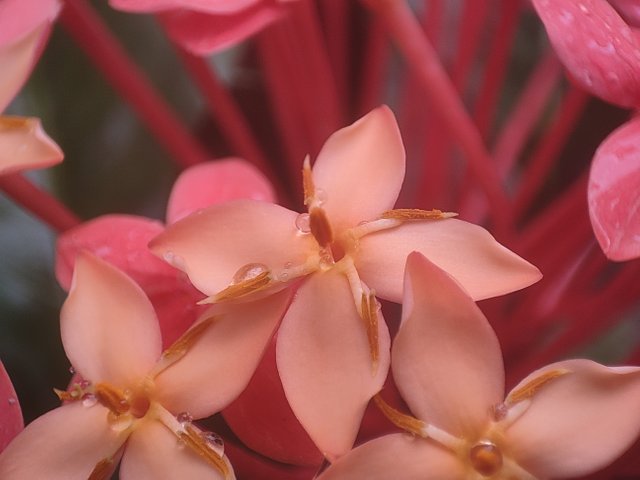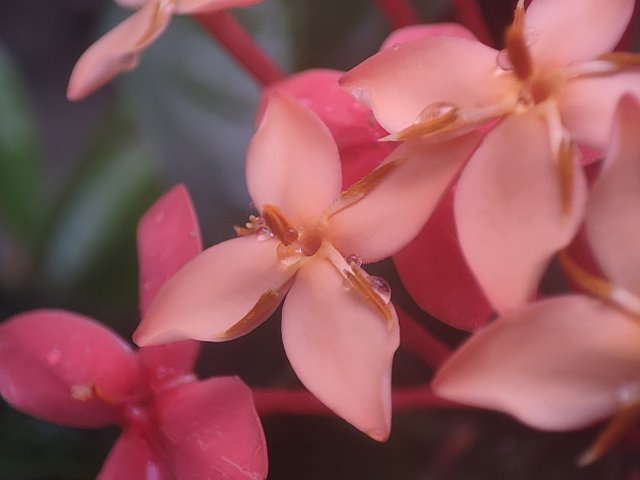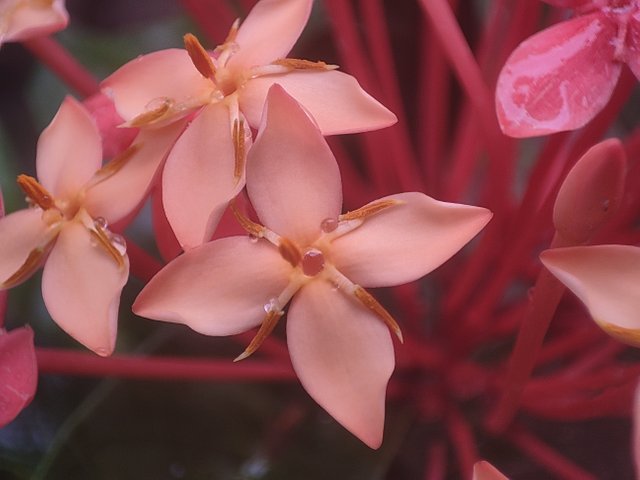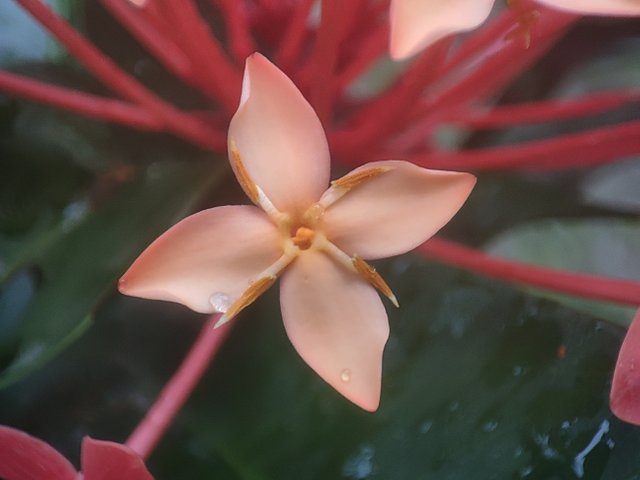Beautiful Colour Jungle Geranium Flower
Exploring the Jungle Geranium: An Exquisite Tropical Flower
The Jungle Geranium, scientifically known as Ixora coccinea, is a striking tropical plant renowned for its vibrant clusters of flowers. Also commonly referred to as Flame of the Woods, Jungle Flame, or Jungle Geranium, this plant is native to the tropical and subtropical regions of Asia, including India and Sri Lanka. Its captivating beauty and hardy nature make it a favorite in gardens and landscapes worldwide.
Botanical Description
The Jungle Geranium is a dense, multi-branched shrub that can grow up to 4-6 feet in height, though some varieties may reach up to 12 feet under optimal conditions. The plant's leaves are leathery, glossy, and dark green, typically 2-4 inches long. They are arranged oppositely on the stems, giving the plant a lush, full appearance.
The most distinguishing feature of the Jungle Geranium is its flowers. The blossoms form large, rounded clusters, or inflorescences, that can span 2-5 inches in diameter. Each flower is tubular, with four petals that spread out to form a star-like shape. The flowers come in a spectrum of colors, including fiery red, orange, yellow, pink, and sometimes white. The vibrant hues of the flowers attract various pollinators, including butterflies and bees.
Growing Conditions and Care
Climate: Being a tropical plant, the Jungle Geranium thrives in warm, humid conditions. It prefers temperatures between 65-85°F and does not tolerate frost. In cooler climates, it is often grown as a houseplant or in greenhouses.
Light: This plant loves sunlight and performs best in full sun to partial shade. In regions with intense midday sun, some protection is beneficial to prevent leaf scorch.
Soil: Jungle Geraniums prefer well-draining, slightly acidic soils with a pH of 5.5 to 6.5. They can adapt to various soil types, but they thrive in loamy or sandy soils enriched with organic matter.
Watering: Regular watering is crucial, especially during the growing season. The soil should be kept consistently moist but not waterlogged. In drier periods, the plant benefits from misting to maintain humidity.




